Even since I got a longer 17-foot whip to try with my Super Antenna, and did several park activations with it, I wanted to perform a more or less objective comparison of the antenna’s performance with its stock titanium whip vs. a much longer upgrade. Intuitively, it makes sense that a longer radiating element contributes to a better performance, but my goal was to see if one can objectively assess it without any additional equipment.
As I mentioned in one of my earlier posts, one of the main values that I see in FT8 (and WSPR for that matter) is their convenience for testing the propagation, and ease of visualization using PSK reporter or WSPRnet. Of course, one can go the CW route and use the Reverse Beacon Network – I tried doing so during my first attempts at low-power HF, having no other means. However, there’s simply less stations monitoring CW than there are of those listening to FT8.
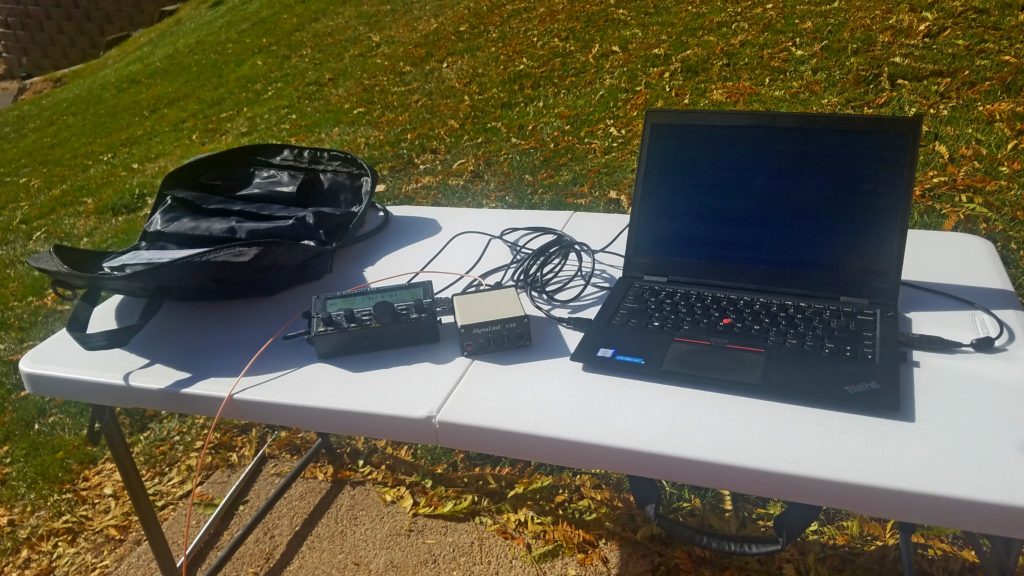
In addition to testing the antenna, this was also my first time configuring the KX2 for digital modes. When I purchased it in summer from a fellow ham, it came with the SignaLink module to interface between the radio and the computer. The only thing that I needed was to install the WSJT-X on my laptop – the rest of the setup was easy. If you have troubles – there is plenty of good how to’s online, like this one from KA9EAK.
My methodology was simple: I started WSJT-X with reporting to PSK reporter enabled, and made sure it runs on both receive and transmit for 20 minutes. I did not look for particular QSOs, but responded to a few that came back to my CQs. The KX2’s power output was set to 5 W, and the audio setting were configured in the beginning and remained the same throughout the test. I initially planned on testing on both 20 and 40 meters – but the latter was quite dead at the time of my experiment, thus I just managed to work on 20 meters.
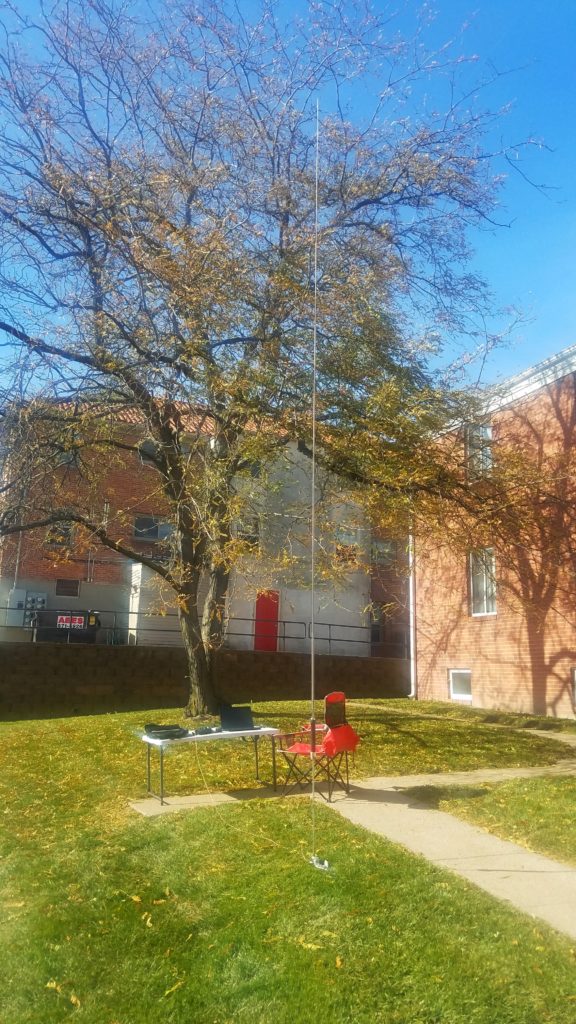
First transmission series were made with the AuperAntenna’s stock titanium whip. It was then swapped with the 17-foot whip from MFJ. The resulting pictures from PSK reporter are given below. One can see from the density of the spotting stations that a longer whip makes the antenna a slightly better listener. Absence of European stations in the second picture may be due to propagation changes rather than the antenna’s under-performance: the gray line moved west while the experiment progressed.
What makes a big difference in the performance on transmission. One can see that several DX stations (in Colombia and Azores) that were only heard with the stock whip, were able to hear my signal when I used the 17-foot MFJ-1979. A new DX station from Antigua and Barbuda also caught my signal. Within the US, transmission performance also shows to be significantly better: the density of receiving stations is significantly higher in the bottom snapshot, and the overall signal reports are 5-10 dB higher with the longer whip.
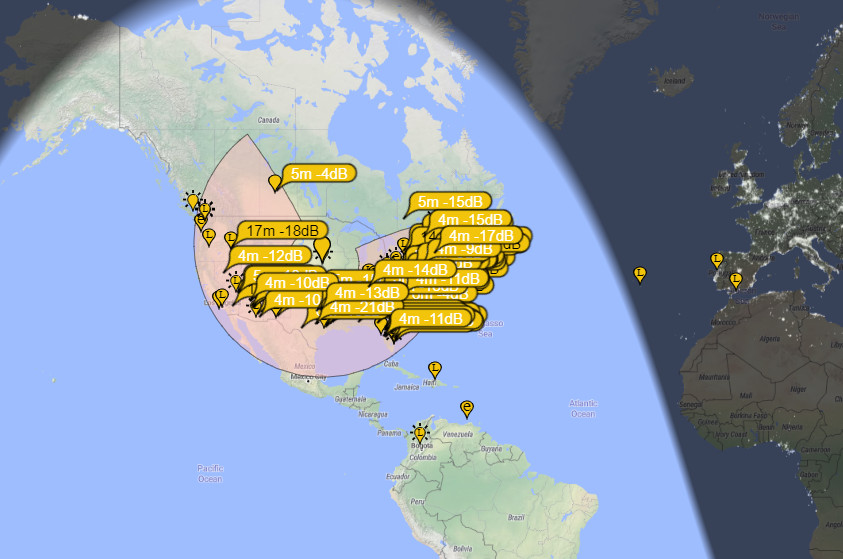
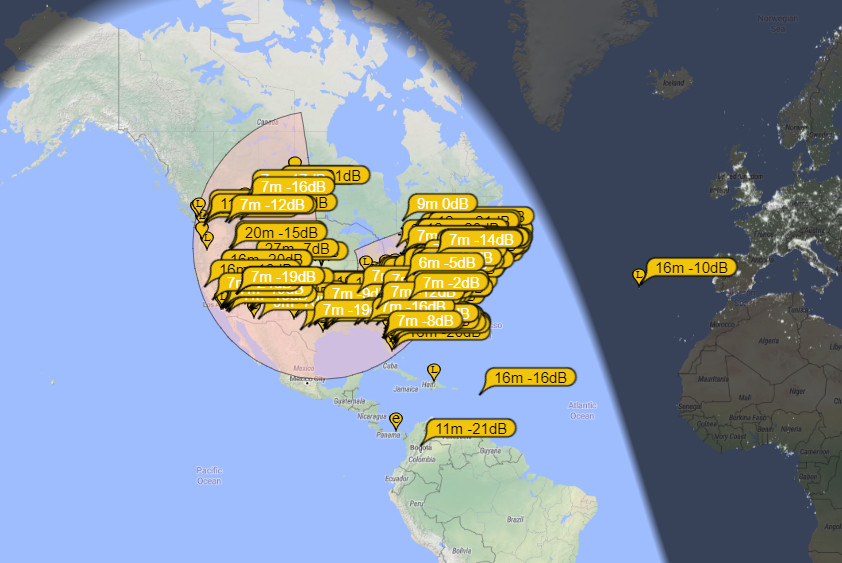
Since I had the whole system running already, I was also quite curious to see how my base antenna – a Hustler 6BTV that I installed a little over a year ago – compares to a portable antenna. From the snapshot from PSK reporter below, we can see that it actually is quite on a par with the SuperAntenna with the long whip that was installed just a few feet away from it. From multiple field radio outings that I had this season, I noticed that my portable stations sometimes outperform my base station – not very surprising given quite a compromised installation. I am still happy to have both though, since sometimes I just want to turn the rig on and get on the air for a short time catching a break from work – and my base station lets me do that just fine!
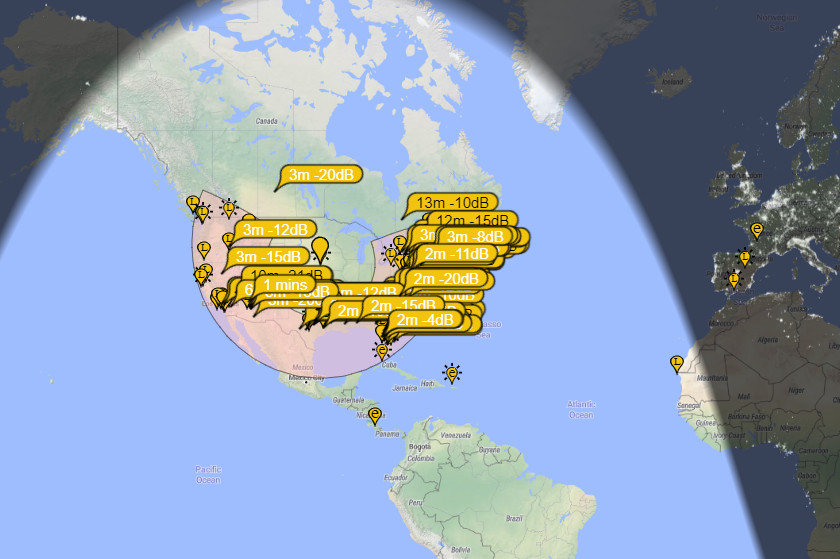
With not too much time for radio due to an intense period at work in the pat few weeks, it was great to spend a few hours comparing the antenna performance in various configurations. Results clearly confirmed that a longer radiator improves the transmitting capability of the antenna. Of course, the theory suggests just that – however, in the spirit of experimentation that is the core of our hobby, it was to see it on the screen, not just know it from what I read in the books.